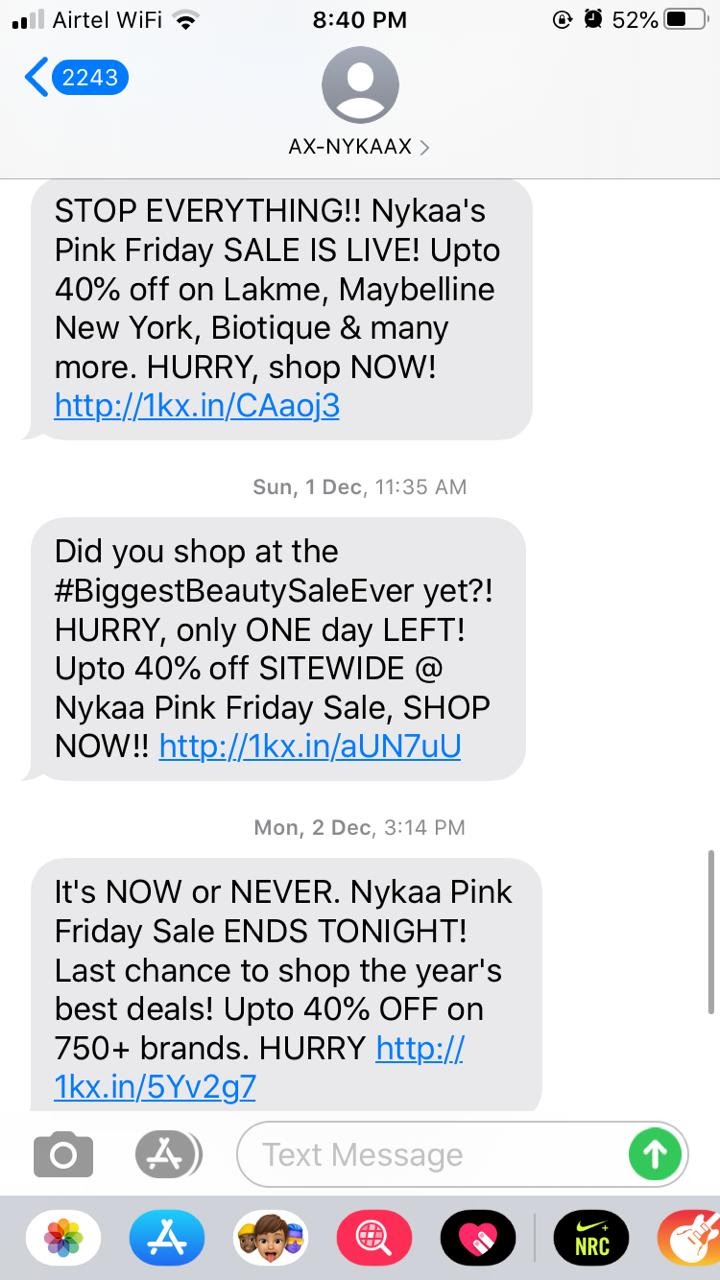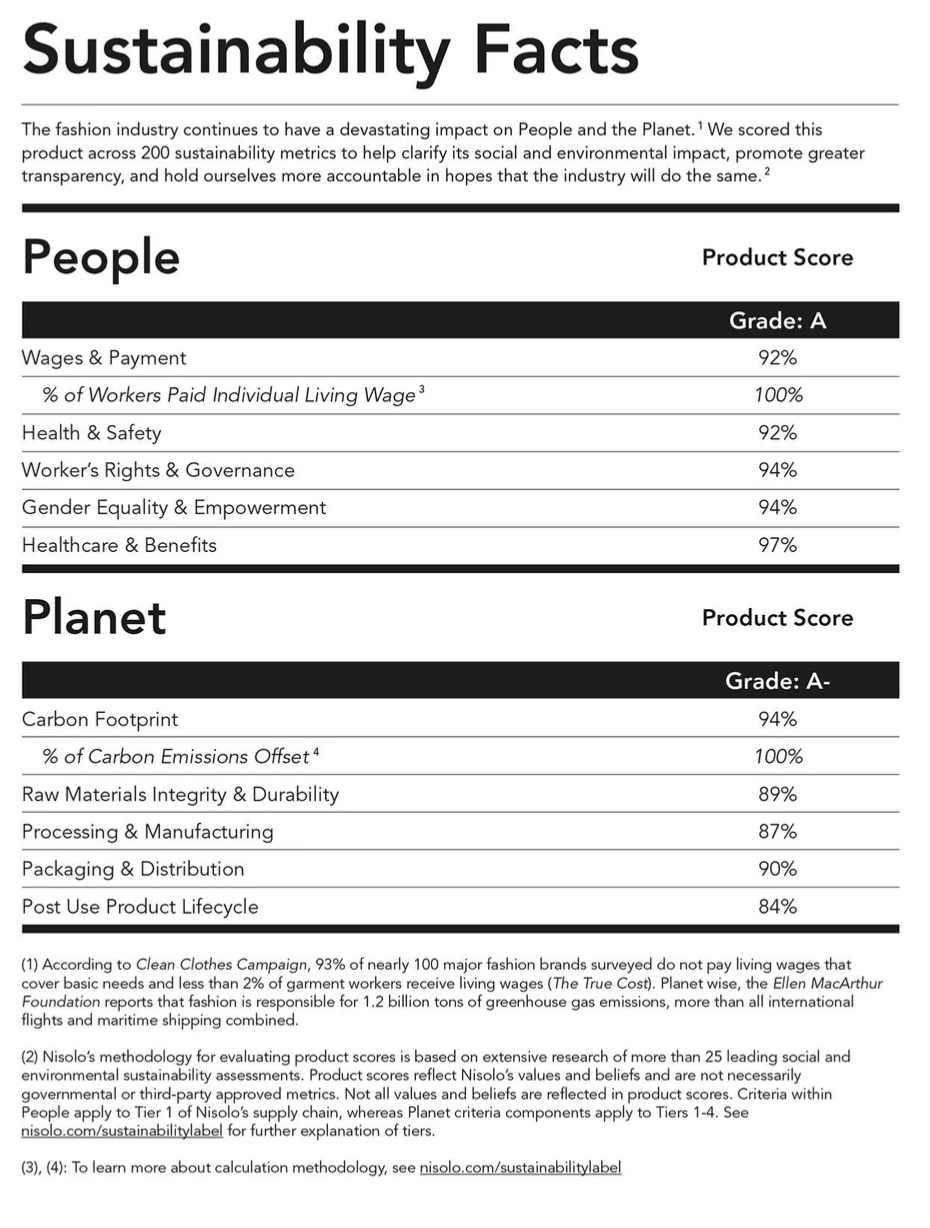As a PR and digital marketing agency, we are always keeping a pulse on the latest trends, serving our clients by navigating the murky waters. Just like fashion, PR and digital marketing have some outrageous trends that make us want to jump on board… and some that make us want to jump ship! Our team has rounded up three trends from 2021 that we’d like to say goodbye to and four that we’d like to see gain popularity in 2022.
We’d like to leave these trends in 2021
1. Text message marketing
Is nothing sacred anymore? Yes I know, I let you email me and send me updates and I can look at those when I have time, but this trend of texting subscribers about sales, coming back to their site, or new product drops feels invasive and forces me to connect with a brand on its terms, not mine. And if it must stay, heed some of these rules from Business 2 Community and don’t send text messages like the ones below.

2. Daily email marketing
We’d like to say goodbye to the email marketing trend of emailing your subscriber list every single day. It’s really hard to do a campaign of this type thoughtfully, and even harder not to be annoying.
3. NFTs as news and as brand initiatives
Seriously, just go away. NFTs are something we have a hard time getting behind and have been surprised to see some brands that define themselves as environmentally friendly promoting marketing campaigns to sell NFTs from their brand. For an example of the energy NFTs require, check out this article from Wired.com that highlights an artist who recently sold an NFT of his art for thousands of dollars in seconds. The money was great, at first, but he didn’t realize that the sale consumed 8.7 megawatt-hours of energy which was equivalent to two years of energy use in his studio.
2022 Trends – Looking into our crystal ball
1. Podcast advertising
Podcasts aren’t going anywhere, and there are many opportunities for brands to get involved to reach super niche, receptive audiences. With the number of options growing constantly, it’s still fairly easy to find something that aligns with your brand and works with a tighter ad budget. Spotify recently added a Sponsored By section in its podcast episodes so listeners can click through to purchase from the advertiser directly from the episode’s credits. This will help advertisers better track ROI for podcast advertising spend, whereas in the past it was anyone’s guess how much website traffic came from a sponsored podcast.

2. Skip Giving Tuesday
Brands should consider skipping ‘Giving Tuesday’ in favor of doing something year-round to benefit their communities and support their favorite nonprofits. By giving year-round, you become a sustaining member for these nonprofits instead of a one-and-done.
3. Start-to-finish supply chain transparency
With supply chain issues becoming a national obsession in 2021, we should see more brands being utterly transparent about their supply chains, including their energy footprint and what they are doing to replenish the resources they are using. (Nisolo in Nashville is a great example of this!) This transparency about resources includes human resources — are you creating jobs that are actually beneficial to the humans working them?

4. Collaboration for waste reduction
Although it’s a fairly small movement right now, we hope to see more brands asking themselves how to make the most of every resource, reducing waste through collaboration. Outdoor industry brand, Sierra Designs is a good example of this, using recycled materials made from factory scraps in their sleeping bags. Another example is Devil’s Foot Beverage Company, which makes craft beverages with real fruit and who is constantly thinking about the whole life of the fruit. Co-founder Ben Colvin is always assessing, “After we zest these lemons, could someone else use them to brew beer? After local cidermakers press apples, what happens to those apples? Maybe we can use them. Where do our byproducts end up? Let’s make sure we actually have a good composting partner. And who do we have to partner with in order to do a good job with recycling? Let’s figure it out.” We’d like to see more brands incorporating thinking like these brands into their overall strategy.
5. Obsessing over Attribution
Over the past 5 years, there’s been a shift towards investing heavily in marketing avenues that can be tracked. More specifically, a heavy focus has been placed on channels where bottom-line success can be directly attributed to it. However, these last-click attributions tend to drastically overweight down-funnel touchpoints and underweight top-funnel touchpoints, leading brands to underinvest in educating the consumer (earned media coverage) and overinvest in trying to sell to people who aren’t ready to buy (pay-per-click and social media advertising). I’d like to see more brands shift their budget to a healthier mix of brand awareness avenues and performance avenues.
